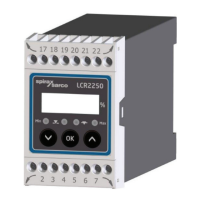16
4. Commissioning
If the actuator / valve has been supplied with a positioner, reference should be made to the
separate Installation and Maintenance Instructions supplied with the product.
4.1 Adjusting the spring
The actuator spring range and lift-off-pressure will be indicated on the name-plate.
Should it be necessary to check or adjust the lift-off-pressure the procedure is described
in Sections 4.1.1 and 4.1.2.
4.1.1 PN9100E, PN9200E, PN9300E or PN9400E spring-extend actuators
only
Note: Adjustment of the spring will only alter the pressure of the control signal air at which
the valve commences to move off its seat (set point) and will not alter the spring pressure
range required to move the valve through its full travel. i.e. 0.2 to 1.0 bar spring (range
0.8 bar) set to commence to lift at 0.4 bar will require a 1.2 bar air pressure (0.4 + 0.8) to
obtain valve full travel.
To adjust set point, refer to Figure 6 and proceed as follows:
-
Ensure the control valve has been isolated and the actuator housing is pressure free.
-
Loosen and remove the clamp nuts and screws (26 and 27, see Figure 7) and remove
the valve adaptor (11).
-
Using two spanners whilst holding the actuator spindle (6) loosen the adaptor lock-nut (25).
-
Apply the control signal pressure required to commence the lifting of the actuator spindle.
-
With the valve plug remaining on its seat adjust the valve connector (10) until it presses
tightly against the valve adaptor (11). Tighten the lock-nut (25). See Figure 6 for correct
installation.
Caution: Two female threads must be visible inside the adaptor when fitted to the valve
spindle.
-
Release the control air signal. Fit the front and rear clamps (13 and 14) across the
connector and valve adaptor (10 and 11). Ensure that the screws (26) and the nut (27)
are not damaged. Fit the locking screws and nuts (26 and 27) and loosely tighten.
Operate the unit over its full travel four times to ensure alignment. Tighten the locking
screws and nuts to 2 N m (1.5 lbf ft). Re-check that the valve just commences to move
off its seat at the right spring range minimum pressure and is fully open at the spring
range maximum pressure.
-
After the test check the position of the travel indicator against the 'arrow' of the connector
and adjust its position accordingly
.
Warning: To prevent damage to the valve seat, please ensure the plug does not turn while
pressing on the seat during assembling or adjustment.
To prevent damage to the diaphragm, ensure the actuator spindle (6) is not allowed
to rotate when the diaphragm is assembled within its housing.

